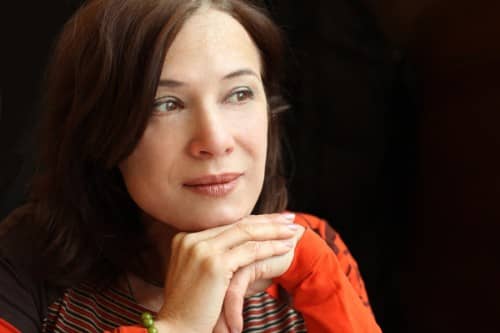Most women have had or are at least familiar with the important role that mammograms can play in diagnosing breast cancer. For many women, the thought of a mammogram causes feelings of anxiety and stress. To face a mammogram with more confidence and less angst, it’s important for women to do their homework and go into every appointment prepared to ask their doctors the right questions.
Have you ever heard the phrase – “it was snowing so hard we couldn’t see; it was like trying to find a snowman in a snowstorm?” This analogy has been used when reading a mammography study as radiologists search numerous images for cancerous lesions in dense tissue in the breast.
Breast density you ask? What is that? What do I need to know about dense breasts? Breasts are made up of dense and fatty tissue.1 On a mammogram, cancer is white. Normal dense tissue also appears white. If a cancer develops in an area of normal dense tissue, it is harder or impossible to see it on the mammogram. If a cancer (white) develops in an area of fat (black), it usually can be seen easily, even when it is small. Because dense tissue can hide cancers, as density increases the ability of mammography to show cancers decreases.
In 2016, an estimated 246,660 new cases of invasive breast cancer are expected to be diagnosed in women in the U.S. alone. That is about 1 in 8 US women (~12%) along with 61,000 new cases of non-invasive (in situ) breast cancer. It is not women only as about 2,600 new cases of invasive breast cancer are expected to be diagnosed in men in 2016. The lifetime risk of a man developing breast cancer is about 1 in 1,000.2
Women under 50 have experienced larger decreases. These decreases are thought to be the result of treatment advances, earlier detection through screening, and increased awareness. I must say that the statistics are astounding and I can’t emphasize enough about screening, early detection and treatment; especially when it comes to density!
So now you ask “what is being done about this?” It all starts with accurate results. The pathway to accurate results is a consistent, reproducible, and an automatic process to assess breast density. This allows the Radiologists to be consistent. As an example, if you have Patient A who came for the past 3 years, 2012, 2013, 2014 and they were scores varied A, C, B and now they appear for their 2016 exam and the Radiologist scored them a D one would say – “how did this happen?” The Radiologists looks back into the records only to find out they were in the fact the Radiologist who was inconsistent in the scoring for this patient who now has invasive cancer. Not only do I believe automated tools can break down these barriers for the radiologist as it relates to fatigue, consistency and other factors, it can also provide a type of “assurance” and could potentially be a supportive tool in the awful thought of litigation.
As a patient; education is key in understanding your mammogram and your results.
A number of patient advocacy organizations provide information online about breast cancer and breast density. AreYouDense, Inc.3 was founded by Nancy M. Cappello, PhD, who began a crusade on breast health and breast density education and reporting because of her own personal experience. After having her 11th annual mammogram in 2003, which was reported as “normal,” Nancy learned only six weeks later that she had a ridge, discovered at her annual exam, in her breast. Further tests revealed that Dr. Cappello had a large 2.5 cm lesion, which was later confirmed to be stage 3c breast cancer that had metastasized to 13 lymph nodes.
Since her diagnosis, Nancy has been an active advocate for legislation as her story was the inspiration behind her state of Connecticut enacting the first state density reporting law in 2009 and subsequently launching a second non-profit Are You Dense Advocacy, Inc. These laws require the reporting of a patient’s breast tissue density following her mammogram. There are now 26 states which have legislation, in addition to a federal bill introduced in both the senate and the house. More info about state and federal legislative efforts can be found at http://www.areyoudenseadvocacy.org/.
Dense Breast-info.org4 is an educational resource which is the collaborative effort of breast imaging experts and medical reviewers. This resource, co-founded by advocate JoAnn Pushkin, radiologist Dr. Wendie Berg, MD, PhD, FACR and, Cindy Henke RTR(M), provides information about dense breast tissue for both patients and healthcare professionals. The site also includes an interactive map which features state-by-state legislative analysis of breast density inform laws.
The bottom line is that access to information about breast density is saving lives. So take the time to educate yourself and don’t get caught in a blinding snow storm when it comes to your health. Ask your health-care provider about breast density.
If you don’t ask you may not hear about it until it is too late.
- What is breast density and why does it matter? http://densebreast-info.org/patients-faq2.aspx
- U.S. Breast Cancer Statistics http://www.breastcancer.org/symptoms/understand_bc/statistics
- Are You Dense? Exposing the best-kept secret®
- Dense Breast-Info an Education Coalition
About iCAD:
iCAD is a global medical technology leader providing innovative cancer detection and therapy solutions. We work passionately to provide precise, powerful healthcare solutions expertly engineered to optimize operational efficiency, clinician confidence and patient outcomes. iCAD offers a comprehensive range of artificial intelligence and workflow solutions to support rapid and accurate detection of breast and colorectal cancers. For more information, visit www.icadmed.com or www.xoftinc.com.
